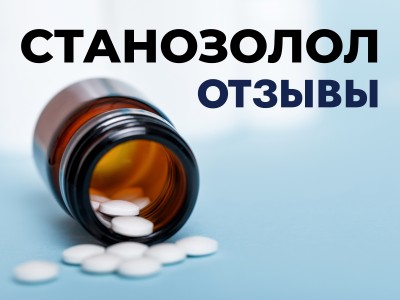Why Health Monitoring is Important
Anabolic steroids can have significant effects on various body systems, including the cardiovascular, endocrine, hepatic, and renal systems. Regular health monitoring helps detect early signs of adverse effects, allowing for timely intervention and adjustments to steroid use.
Key Health Metrics to Monitor
1. Cardiovascular Health
Steroid use can impact heart health and cholesterol levels. Monitoring cardiovascular health is essential to prevent serious complications.
-
Blood Pressure: Regularly check blood pressure to detect hypertension.
-
Cholesterol Levels: Monitor HDL (good cholesterol) and LDL (bad cholesterol) levels to assess cardiovascular risk.
-
Heart Function: Consider periodic ECGs (electrocardiograms) to evaluate heart health.
2. Liver Function
Oral steroids, in particular, can be hepatotoxic, stressing the liver.
-
Liver Enzymes: Test for elevated levels of ALT (alanine aminotransferase) and AST (aspartate aminotransferase) to check for liver stress or damage.
-
Bilirubin Levels: High bilirubin can indicate liver dysfunction.
3. Kidney Function
Steroid use can affect renal function, so regular testing is essential.
-
Creatinine Levels: Elevated creatinine can indicate kidney strain or damage.
-
BUN (Blood Urea Nitrogen): High BUN levels may also signal kidney issues.
4. Hormone Levels
Steroid use disrupts the body's natural hormone balance.
-
Testosterone Levels: Measure to monitor the suppression of natural testosterone production.
-
Estrogen Levels: Check to manage potential estrogenic side effects such as gynecomastia.
-
Luteinizing Hormone (LH) and Follicle-Stimulating Hormone (FSH): Assess to gauge the impact on natural hormone production and fertility.
5. Blood Counts
Steroid use can affect red blood cell production and overall blood health.
-
Complete Blood Count (CBC): Monitor hemoglobin, hematocrit, and red blood cell counts to detect polycythemia (an overproduction of red blood cells) which can increase the risk of blood clots.
6. Metabolic Health
Steroids can affect metabolism and insulin sensitivity.
-
Blood Glucose Levels: Regularly check fasting blood glucose to detect early signs of insulin resistance or diabetes.
-
Lipid Profile: Monitor triglycerides alongside cholesterol levels for a comprehensive view of metabolic health.
Recommended Testing Schedule
To effectively monitor health during steroid use, follow a structured testing schedule:
-
Baseline Testing: Conduct a comprehensive health check before starting steroid use. This includes all the key metrics mentioned above.
-
Mid-Cycle Testing: Test at the mid-point of your steroid cycle to detect any early signs of adverse effects.
-
Post-Cycle Testing: Conduct tests at the end of your steroid cycle and during post-cycle therapy (PCT) to assess recovery and long-term impacts.
-
Regular Monitoring: Depending on the duration of steroid use, schedule regular health checks every 3-6 months to continuously monitor your health.
Best Practices for Health Monitoring
1. Work with Healthcare Professionals
Consult with healthcare professionals who understand the implications of steroid use. They can help interpret test results and provide medical advice tailored to your needs.
2. Keep Detailed Records
Maintain detailed records of all test results, dosages, and any side effects experienced. This information is crucial for adjusting dosages and identifying patterns over time.
3. Use Liver Support Supplements
If using hepatotoxic oral steroids, consider liver support supplements such as milk thistle, N-acetyl cysteine (NAC), and TUDCA to protect liver health.
4. Monitor Blood Pressure Regularly
Invest in a home blood pressure monitor and check your blood pressure regularly. Maintain a log and report any significant changes to your healthcare provider.
5. Maintain a Healthy Lifestyle
Complement steroid use with a healthy lifestyle, including a balanced diet, regular exercise, adequate hydration, and avoiding alcohol and other hepatotoxic substances.
6. Follow Proper Injection Techniques
For injectable steroids, ensure proper injection techniques to minimize the risk of infection or tissue damage. Rotate injection sites to prevent scar tissue buildup.
Managing Side Effects
1. Estrogenic Side Effects
-
Aromatase Inhibitors: Use AIs like Arimidex or Letrozole to manage estrogen levels and prevent gynecomastia.
-
SERMs: Selective estrogen receptor modulators such as Nolvadex (tamoxifen) can help block estrogen effects on breast tissue.
2. Androgenic Side Effects
-
Acne Management: Use proper skincare routines and consider medications if necessary.
-
Hair Loss: Finasteride can help manage hair loss by reducing DHT levels.
3. Cardiovascular Health
-
Diet and Exercise: Maintain a heart-healthy diet rich in omega-3 fatty acids and engage in regular cardiovascular exercise.
-
Cholesterol Management: Consider supplements like fish oil and niacin to support healthy cholesterol levels.
4. Liver Health
-
Liver Supplements: Use liver support supplements and avoid alcohol to protect liver health.
-
Regular Testing: Monitor liver enzymes regularly to catch any early signs of liver stress.
Conclusion
Proper health monitoring and regular testing are crucial for anyone using anabolic steroids. By following the guidelines in this comprehensive guide, you can minimize risks and ensure safer steroid use. Always consult with healthcare professionals and maintain a proactive approach to your health to achieve your fitness goals while safeguarding your well-being.



